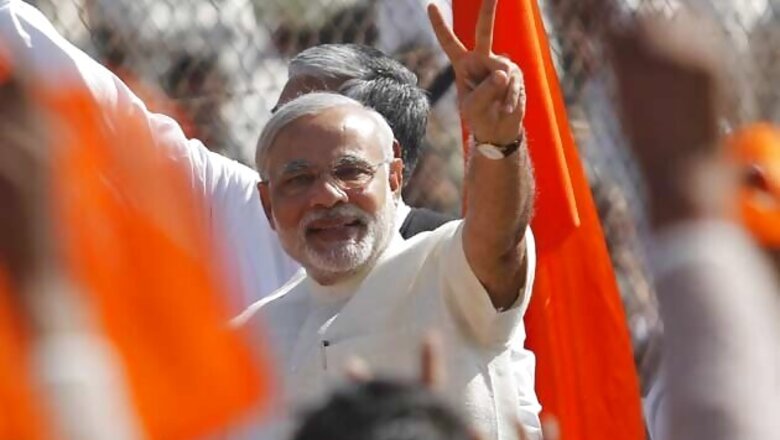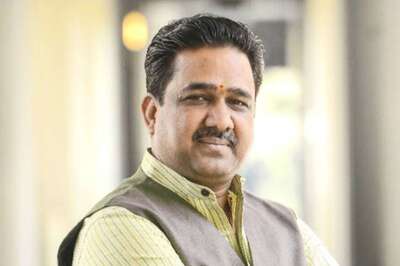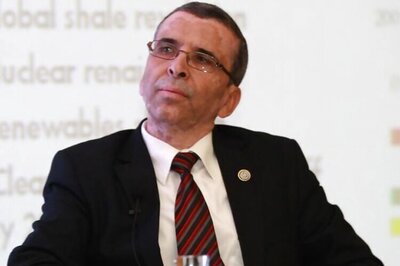
views
When 2014 dawned on India, there was widespread pessimism across the country. With high inflation, slowdown in the economy, humungous corruption allegations reaching the doorsteps of the Prime Minister's Office, policy paralysis and a society staring at a political class busy with mudslinging and finding little time to tackle problems facing the country.
On one side were Congress and its allies enjoying the fruits of in power at Centre for 10 years while the opposition was led by the Bharatiya Janata Party under a new messiah in a dynamic, investor friendly and fine orator Narendra Modi.
A few months back Modi had successfully united a faction ridden BJP after he was made the party's prime ministerial candidate for the 2014 Lok Sabha elections. The then Gujarat chief minister had already led his party to three consecutive Assembly election wins and was already the frontrunner to take on the Congress-led UPA.
Buoyed by the wins in Rajasthan, Madhya Pradesh and Chhattisgarh Assembly elections in December 2013, Modi launched a no holds barred campaign. Much before the Lok Sabha elections dates had been announced, Modi was already omnipresent, helped in no small measure by several innovative campaign strategies including the "chai pe charcha" which highlighted his humble background of a tea seller.
While his rivals taunted Modi's tea seller background, the shrewd politician in him turned the battle on its head by using the same to his advantage. Pitted against Congress's Rahul Gandhi, Modi left no stones unturned in sending out a strong message that he was fighting against a person who was proverbially born with a silver spoon in his mouth while he toiled hard for his achievements.
With a restless India eager for change, Modi's message delivered with theatrical intensity struck the right chord especially among the youngsters. With the country's economy not in the pink of health, job creation almost stagnant and high inflation making it tough for people to lead a decent life, Modi not only gave hope to the voters but also highlighted the work done by his administration in Gujarat during the last 12 years.
A burgeoning economy, low crime rate and corruption, Modi's Gujarat stood in stark contrast to several other parts of India. His "hard work vs Harvard" analogy in response to former finance minister P Chidambaram's swipe at him also endeared to a large section of the people. Claiming that he propelled Gujarat on the fast lane of development without a degree from a top foreign university, Modi offered to run around India and dispel the darkness surrounding India.
As Mission 272+, BJP's strategy to secure majority in the Lok Sabha, gathered momentum, so did Modi's appeal. Rallies after rallies several thousands, some times even lakhs turned up to see and hear him as he singlehandedly pulled his party ahead. A small team led by his Man Friday Amit Shah stitched together alliances in some states and fine tuned the campaign strategy keeping him at the centre of it.
His rivals were left in awe and decades old political equations turned upside down as the Modi juggernaut trampled its opponents to deliver a majority verdict in favour of the BJP. From the western most part of the country to the eastern tip, from the mighty Himalayas in the north to the south where Arabian Sea, Indian Ocean and Bay of Bengal meet, Modi left his mark.
Pitted against an uninspiring Rahul Gandhi and a host of regional satraps, who were seen as articulating nothing new, Modi came as a charismatic, energetic, development oriented leader with a clear strategy.
The 2014 Lok Sabha elections were historic in more ways than one. One, in a parliamentary democracy, it was fought like a presidential one. Two, it was the first time that any party other than the Congress won an absolute majority on its own. Thirdly, the Congress for the first time was reduced to double-digit figure managing to win just 44 seats.
When Modi took oath as India's 15th prime minister, it certainly heralded the start of a new era.
Yet his innings did not start with a big bang as many expected but with several small but nevertheless very important steps. Punctuality, order, cleanliness, development for all were some of the initiatives his administration has taken since coming to power which if implemented with sincerity can go a long way in overhauling the way country functions.
With two hostile and nuclear armed powers in the north and west, Modi took several steps to rekindle India's friendly relations with its smaller neighbours. The presence of SAARC leaders at his swearing-in ceremony send out positive signals. Even smaller countries like Bhutan, which incidentally was Modi's first foreign tour, and Nepal have been high on his agenda.
His twin tours to economic superpowers Japan and USA have boosted sentiments both at home and abroad that the Central government is looking to kickstart the economy and aggressively wooing investors. With US President Barack Obama the chief guest on Republic Day in 2015, the time is ripe to push Indo-US relations to a new high.
Top leaders like Russian President Vladimir Putin, Chinese President Xi Jinping, Chinese Foreign Minister Wang Yi, French Foreign Minister Laurent Fabius, British Foreign Secretary William Hague, Russian Deputy PM Dmitry Rogozin and US Secretary of State John Kerry have all toured India since June 2014. Modi also left a positive impact on the BRICS summit in Brazil, the Australia tour where he attended the G-20 summit and the ASEAN and East Asia summits in Myanmar.
While the economy is yet to recover fully, there are signs that the worst is over. Some steps like the recent ordinances on coal blocks allocation, insurance, land acquisition have sent out the message that this government means business. The Make in India campaign is also a signal to the industry to gets its acts together.
But lack of movement on tax reforms, high interest rates, big sops for the industrial sector and inflation are still a cause for worry. The first budget presented by Finance Minister Arun Jaitley failed to outline any big reform which are likely to be rectified in 2015.
Several other irritants remain. India's relations with Pakistan and China remain frosty. Modi's government had cancelled secretary-level talks with Pakistan after the Pakistan High Commissioner met separatist Hurriyat leaders from Kashmir. There was a face off between Indian and Chinese troops in Ladakh region during Xi Jinping's India tour, putting a big question mark over China intention.
Yet, the biggest obstacle his government face came from within. Several Union Ministers and leaders of the ruling coalition kept on shooting off controversial statements and campaigns like "ghar wapasi", an euphemism for religious conversion, have unnecessarily taken the spot light away from governance issues. The lack of numbers in the Rajya Sabha, too, has seen the government on the backfoot on many issues.
Still, with a brute majority in the Lok Sabha and a high approval rating vindicated by BJP's win in Haryana, Maharashtra, Jahrakhand and a massive increase in the numbers of MLAs in Jammu and Kashmir, the road ahead for Modi should be smooth.
As 2014 comes to an end, the one message that comes out very clearly is - Modi was the right man, at the right place, at the right time.


















Comments
0 comment